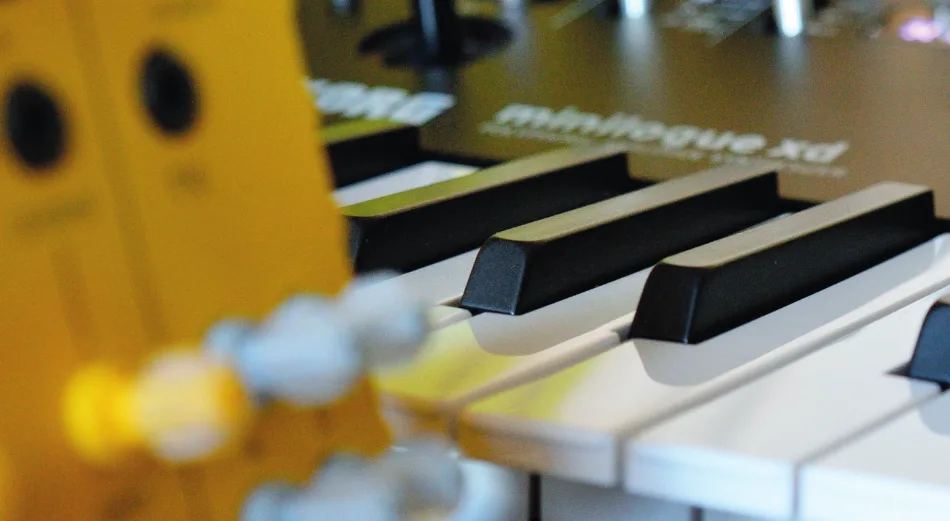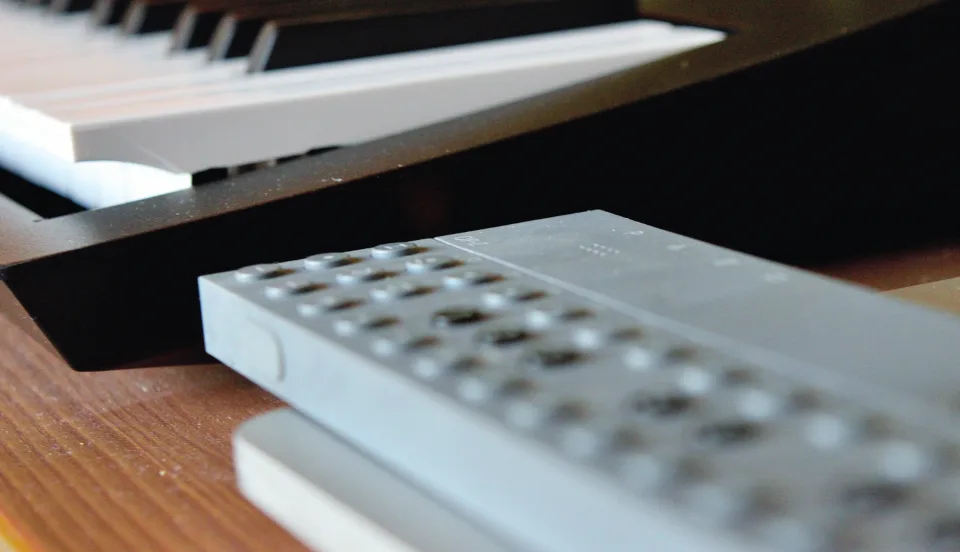Great gear comes packed with an array of connectivity options. No matter how powerful or great a piece of kit it on its own – mixing and matching it in different and surprising combinations can greatly extend the sonic potential and uniqueness of sound produced.
Modern systems use these ports for external sound control. Parameters and voltages from one bit of gear, much like in industrial systems, can be used to control parameters in another. Depending on the type of instruments, these signals can be digital or analog. Digital signals carry synchronization messages and data, while analog signals carry sound or other raw values. By using a network of oscillators (VCOs and DCOs), filters (VCFs) and envelope generators (analog circuits which help shape signals), a music setup processes and shapes sound much like a factory control system would process its data flow filled with sensors, actuators and control points.
Luckily for us today, all three bits of kit in the title are crazy powerful and are also equipped with a variety of IO functionality which makes them perfect for this small demonstration of integrating Teenage Engineering’s gear in a traditional existing creative setup.

The minilogue xd is a powerful synth. It’s the evolution of the already insanely versatile minilogue, adding new features and a more robust core. In the future, we plan on a full review of synth, but of interest to us today, though, are the two CV inputs on the back which can be assigned various roles. One of these is controlling modulation parameters, essentially opening up the synth design to external patching. Without further ado, let’s try a few fun things with these three bits of kit.
Bring in the POM-400!
Let’s begin by patching in the square LFO of the POM-400 with the minilogue xd and routing this signal to the cutoff frequency of the minilogue filter. In the first patch we’ve created, we used the on-board LFO of the minilogue in its one-shot mode. By raising the speed of POM-400’s LFO a bit we created a lush, rhythmic patch thanks to the snappiness of the external LFO and minilogue’s generous analog VCOs. It was inspiring enough as a sound to create a small track based entirely around it alone. (1)
Next, we created a sample using all three oscillators of the minilogue xd and connecting both the onboard LFO and the POM-400 LFO to the cutoff parameter. This created a polyrhythmic texture that constantly evolves. By routing the third oscillator of the minilogue post-VCF, we created a bitimbral patch which has a contrasting sine drone. Another little demo was created around this patch. (2)
In order to create an external envelope, we used the OP-Z as for gate outputs and patched it into the POM-400’s envelope trigger. The envelope out was patched into the minilogue xd and used on a plucky patch. The use of an external envelope enabled complex soundshaping and a long “blooming” timbral quality on held notes. (3)
For the next example, we used the square VCO of the POM-400 to modulate the main VCO shape of the minilogue xd, and the sine VCO to modulate the cutoff. Coupled with a patch with complex internal LFO, amp and classic envelope settings, a very complex sound can be made. The use of the square VCO for LFO purposes is quite interesting as it allows for PWM, which can create unique patterns. Additionally, it’s great that all three VCOs of the POM-400 extend deep into the sub-audio range, which allows their use in this manner. (4)
By connecting the output of the POM-400 LFO to the trigger of its envelope, we were able to create an external envelope. By using the gate output of the OP-Z, this envelope can even be MIDI-clock controlled. We created a patch to demonstrate the sound potential of such an envelope. (5)
Additional ideas we’d give would include connecting the POM-400 (or even POM-16) sequencer output to modulation CV ins of external gear to create even finer looping modulation routines, or connecting the CV output of the OP-Z to a POM-400 VCO, which is in turn used as an LFO for modulation which changes speeds through octaves.
One of OP-Z’s unique features enabled us to create these examples with high-quality audio. Namely, USB-powered devices can often cause noise in the system, which is less than ideal. To combat this, the OP-Z can use its internal battery to function while using USB for only data transfer. This effectively resolves all noise issues caused by USB power and makes it one of the cleanest MIDI-to-CV boxes we’ve used. Kudos for that.

And that’s a wrap! In this mini-article we tried to showcase some of the abilities of the POM-400 and OP-Z when used with another versatile piece of gear. We hope that our examples illustrate the capabilities and power of these three instruments and further inspire any creation and sound exploration. We’ve had a lot of fun creating them!
Sound examples
(1) https://magazinmehatronika.com/muse/Example%201.mp3
(2) https://magazinmehatronika.com/muse/Example%202.mp3
(3) https://magazinmehatronika.com/muse/Example%203.mp3
(4) https://magazinmehatronika.com/muse/Example%204.mp3
(5) https://magazinmehatronika.com/muse/Example%205.mp3
More information: teenage.engineering


